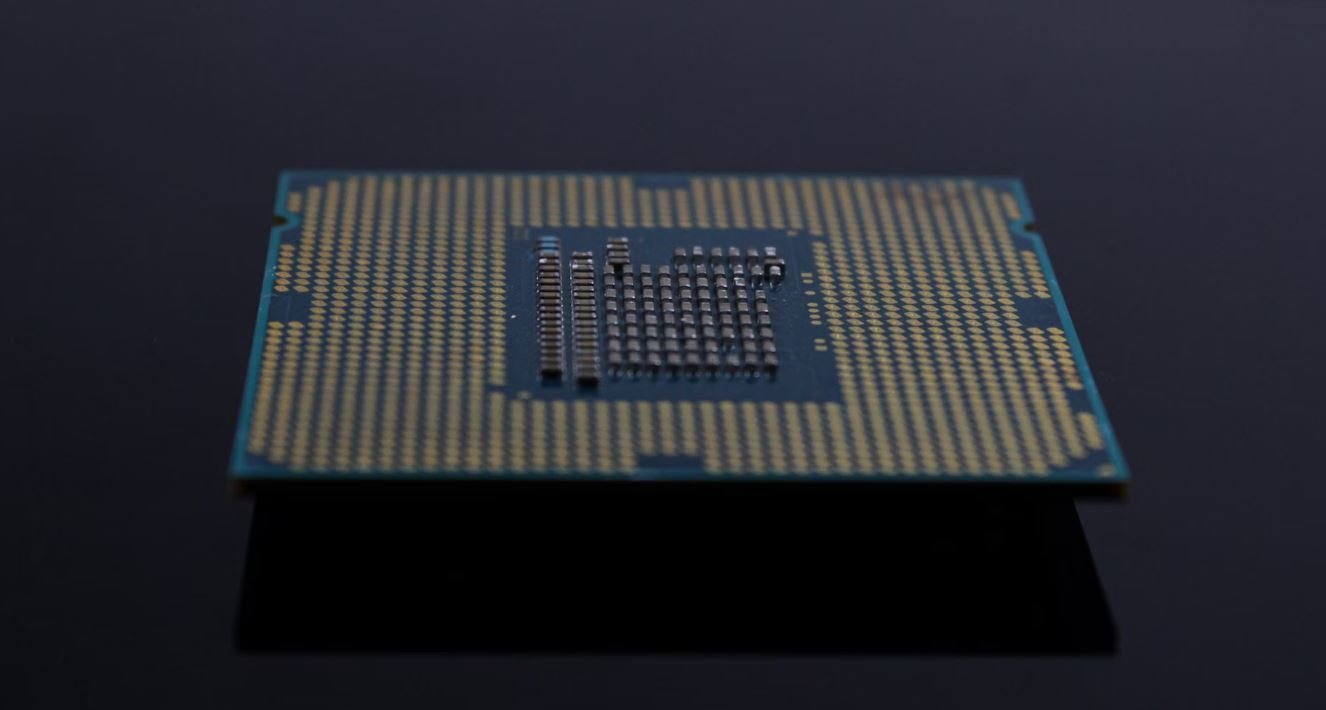How Tesla Started
Tesla, Inc., formerly known as Tesla Motors, is an American electric vehicle and clean energy company founded by Elon Musk, Martin Eberhard, Marc Tarpenning, JB Straubel, and Ian Wright. Established in 2003, Tesla has become one of the most influential and innovative car manufacturers, revolutionizing the industry with their electric vehicles and sustainable energy solutions.
Key Takeaways:
- Tesla, Inc. is an American electric vehicle and clean energy company established in 2003.
- Founded by Elon Musk, Martin Eberhard, Marc Tarpenning, JB Straubel, and Ian Wright.
- Tesla’s core mission is to accelerate the world’s transition to sustainable energy.
- Their electric vehicles are known for their high-performance, long-range capabilities.
- Tesla has a global presence with production facilities and Gigafactories worldwide.
The idea for Tesla originated in 2003 when: Elon Musk and Martin Eberhard founded the company with the goal of producing electric vehicles that would outperform existing offerings in terms of performance and energy efficiency. *Tesla aimed to disrupt the automotive industry by popularizing electric vehicles and demonstrating their viability in the market.*
Initially, Tesla faced various challenges and setbacks, but their breakthrough came with the launch of the Roadster in 2008. The Roadster, a fully electric sports car, showcased Tesla’s innovative technology and set the stage for future electric vehicles.
| Model | Year Introduced |
|---|---|
| Roadster | 2008 |
| Model S | 2012 |
| Model X | 2015 |
| Model 3 | 2017 |
| Model Y | 2020 |
Following the success of the Roadster, Tesla expanded its lineup with the introduction of the Model S in 2012, followed by the Model X in 2015, the Model 3 in 2017, and the Model Y in 2020. These vehicles pushed the boundaries of electric vehicles with their cutting-edge technology, impressive range, and distinctive design.
Tesla’s Gigafactories
Tesla operates several Gigafactories, massive manufacturing plants that play a crucial role in their production capacity and supply chain. These Gigafactories are strategically located across the globe to reach different markets efficiently and reduce transportation costs.
- Gigafactory 1 in Reno, Nevada, United States: The first Gigafactory opened in 2016, and it is responsible for producing battery packs, energy storage products, and electric vehicle powertrains.
- Gigafactory 2 in Buffalo, New York, United States: This facility focuses on solar panel production and the Tesla Solar Roof.
- Gigafactory 3 in Shanghai, China: The first Tesla factory outside the United States, it enables Tesla to cater to the rapidly growing demand in the Chinese market.
| Gigafactory | Location | Production Focus |
|---|---|---|
| Gigafactory 1 | Reno, Nevada, United States | Battery packs, energy storage, powertrains |
| Gigafactory 2 | Buffalo, New York, United States | Solar panels, Solar Roof |
| Gigafactory 3 | Shanghai, China | Vehicle production |
With a focus on sustainability and innovation: Tesla has not only revolutionized the automotive industry but has also made significant advances in other sectors. Their energy storage solutions, such as Powerwall and Powerpack, have been instrumental in enabling the widespread adoption of renewable energy sources.
Tesla’s Vision for the Future
Tesla’s vision extends beyond manufacturing electric vehicles. The company aims to create a sustainable energy ecosystem that encompasses renewable energy generation, energy storage, and electric transportation.
- Tesla plans to launch several new vehicle models in the coming years, including the futuristic Cybertruck and the upcoming Tesla Semi.
- The development of self-driving technology, known as Autopilot, is a top priority for Tesla to realize their vision of fully autonomous vehicles.
- Through partnerships with utility companies and the deployment of large-scale energy storage systems, Tesla aims to stabilize electricity grids and accelerate the transition to renewable energy sources.
By continuously pushing the boundaries: Tesla has positioned itself as a leader in the electric vehicle market and has garnered a cult-like following of enthusiastic supporters. With their commitment to sustainability and technological advancement, Tesla is set to shape the future of transportation and energy.
Tesla’s Milestones
Throughout its history, Tesla has achieved several notable milestones:
- Tesla became the first publicly listed automaker in the United States in 2010.
- In 2013, Tesla’s Model S received the highest safety rating of any car ever tested by the National Highway Traffic Safety Administration.
- Tesla surpassed the milestone of 1 million electric vehicles produced in 2020.
- The market capitalization of Tesla exceeded $800 billion in early 2021, making it one of the most valuable companies globally.
As Tesla continues to innovate and expand its reach, the company’s impact on the automotive industry and the transition to sustainable energy remains unparalleled.
Tesla’s Headquarters
Tesla’s headquarters, also known as the Tesla Factory, is located in Fremont, California. This facility serves as the main vehicle manufacturing plant for Tesla.
| Location | Year Opened | Size |
|---|---|---|
| Fremont, California, United States | 2010 | Over 5.3 million square feet |
With state-of-the-art production facilities and a focus on sustainability, Tesla’s headquarters reflect the company’s commitment to innovative and environmentally friendly manufacturing processes.

Common Misconceptions
Tesla’s Founding
There are several common misconceptions surrounding how Tesla started that often lead to misunderstandings about the company’s history. One misconception is that Tesla was founded by Elon Musk. In reality, Tesla was actually founded by Martin Eberhard and Marc Tarpenning in 2003. Elon Musk joined the company as an investor and later became the CEO. Another misconception is that Tesla’s primary focus from the beginning was on electric cars. In fact, when Tesla was founded, their initial goal was to bring about the production and marketing of electric sports cars.
- Tesla was not founded by Elon Musk.
- Tesla initially focused on electric sports cars, not general electric vehicles.
- Elon Musk joined Tesla as an investor before becoming the CEO.
Tesla’s Financial Viability
Another common misconception is that Tesla has always struggled financially and has never turned a profit. While it is true that Tesla faced financial difficulties in its early years, the company has achieved profitability in recent years. Tesla’s financial success can be attributed to several factors, including the growing demand for electric vehicles and the company’s investments in energy storage solutions such as the Powerwall and Powerpack.
- Tesla has achieved profitability in recent years.
- Growing demand for electric vehicles has contributed to Tesla’s financial success.
- Tesla’s investments in energy storage solutions have played a role in their profitability.
Tesla’s Battery Technology
One common misconception about Tesla is that the company’s success is solely based on their electric vehicles. While their electric cars have played a significant role in their popularity, Tesla’s success can also be attributed to their advancements in battery technology. Tesla’s development of efficient and high-capacity batteries has not only improved the range and performance of their cars but has also resulted in the development of energy storage solutions that have revolutionized the renewable energy industry.
- Tesla’s success is not solely based on electric vehicles.
- Tesla’s advancements in battery technology have had a significant impact on their success.
- Tesla’s batteries have revolutionized the renewable energy industry.
Availability of Charging Infrastructure
One misconception that people have about Tesla is that the availability of charging infrastructure for electric vehicles is limited, limiting the practicality of owning a Tesla. In reality, Tesla has built an extensive Supercharger network that spans across many countries, providing convenient and fast charging options for their customers. Additionally, Tesla has also invested in destination chargers, which are installed at various locations such as hotels, restaurants, and shopping centers, making it even easier for Tesla owners to find charging options.
- Tesla has an extensive Supercharger network that provides fast charging options.
- Tesla has also invested in destination chargers for added convenience.
- Tesla owners have access to a wide range of charging options.
Tesla’s Autopilot Feature
There is a common misconception that Tesla’s Autopilot feature allows for fully autonomous driving, meaning the driver can completely relinquish control of the vehicle. However, Tesla’s Autopilot is actually considered to be a driver-assistance feature, not a full self-driving system. While Autopilot can handle some driving tasks, such as steering and acceleration, the driver is still responsible for maintaining control of the vehicle and being attentive at all times. Tesla has repeatedly emphasized the importance of keeping your hands on the steering wheel and being ready to take over if needed.
- Tesla’s Autopilot is a driver-assistance feature, not a fully autonomous driving system.
- Drivers must still be attentive and ready to take control of the vehicle.
- Keeping hands on the steering wheel is essential while using Autopilot.

How Tesla Started
Nikola Tesla is a renowned inventor and electrical engineer who is best known for his contributions to the development of alternating current (AC) electrical systems. His work laid the foundation for modern electricity and has shaped the way we power our world today. This article explores the ten key milestones that marked Tesla’s journey towards the establishment of his namesake electric vehicle company, Tesla Inc.
Inception of Tesla Motors
Tesla Motors was founded by Martin Eberhard and Marc Tarpenning in 2003 with the goal of accelerating the world’s transition to sustainable energy. The company’s primary focus was on developing electric vehicles that would rival traditional combustion engine cars in terms of performance and appeal.
The Roadster: Tesla’s First Production Car
The introduction of the Tesla Roadster in 2008 marked the moment when Tesla entered the automotive industry. With a range of 245 miles per charge, the Roadster set a new standard for electric vehicles in terms of both range and acceleration. The sleek design and impressive performance helped change the perception of electric cars as slow and unattractive.
Supercharging Network Expansion
Recognizing the need for a reliable and convenient charging infrastructure, Tesla began building the Supercharger network in 2012. This network of high-speed charging stations enabled Tesla drivers to travel long distances without worrying about running out of power. By 2020, Tesla had more than 20,000 Superchargers worldwide.
Model S: Electric Luxury Sedan
The launch of the Tesla Model S in 2012 marked a significant step forward in electric vehicle technology. The Model S offered a range of up to 370 miles and could accelerate from 0 to 60 mph in just over four seconds. Its luxurious interior and innovative features positioned the Model S as a desirable alternative to traditional luxury sedans.
Autopilot: Advancing Self-Driving Technology
Tesla’s Autopilot feature, introduced in 2014, represented a major milestone in self-driving technology. While not fully autonomous, Autopilot enabled Tesla vehicles to steer, accelerate, and brake automatically in certain conditions. This groundbreaking feature laid the groundwork for future advancements in autonomous driving technology.
Gigafactories: Scaling Up Production
In an effort to meet the growing demand for electric vehicles, Tesla began constructing massive battery factories called Gigafactories. These state-of-the-art facilities allowed for efficient production of lithium-ion batteries, which are crucial components of electric vehicles. As of 2021, Tesla operates four Gigafactories worldwide.
Model 3: Affordable Electric Vehicle
The launch of the Tesla Model 3 in 2017 aimed to make electric vehicles accessible to a wider audience. With a starting price of $35,000 and a range of over 200 miles, the Model 3 became the best-selling electric car worldwide. Its success signaled a shift in the automotive industry towards sustainable transportation.
Model Y: Electric Compact SUV
In 2020, Tesla introduced the Model Y, a compact SUV that combines the benefits of electric power with the versatility of an SUV. With optional third-row seating and a range of up to 326 miles, the Model Y quickly gained popularity in the competitive SUV market.
Cybertruck: Electric Pickup Innovation
The Cybertruck, unveiled in 2019, redefined the concept of an electric pickup truck. With an exoskeleton design and futuristic features, the Cybertruck challenged traditional notions of what a pickup truck should look like. Its astounding pre-order numbers demonstrate the public’s eagerness for innovative electric vehicles.
Advancing Sustainable Energy: Tesla Energy
Tesla’s commitment to sustainable energy extends beyond electric vehicles. The company’s Tesla Energy division focuses on developing and producing clean energy products, including solar panels and energy storage solutions. Tesla’s Powerwall, for instance, empowers households to store excess energy from renewable sources for later use.
Throughout Tesla’s journey, the company has revolutionized the electric vehicle industry and pushed boundaries in sustainable energy. From the groundbreaking Roadster to the highly anticipated Cybertruck, Tesla’s commitment to innovation and environmental responsibility has propelled the world towards a greener future.
How Tesla Started – Frequently Asked Questions
1. What is the history of Tesla?
Tesla was founded in 2003 by a group of engineers including Martin Eberhard and Marc Tarpenning. It is named after the famous scientist and inventor, Nikola Tesla. The company’s initial goal was to accelerate the world’s transition to sustainable transportation by producing electric vehicles.
2. Who is the current CEO of Tesla?
The current CEO of Tesla is Elon Musk. He joined the company in 2004 as Chairman of the Board and became CEO in 2008. Elon Musk is also known for his other ventures such as SpaceX and Neuralink.
3. What were Tesla’s early products?
Tesla’s first product was the Tesla Roadster, an all-electric sports car launched in 2008. It was followed by the Model S sedan in 2012, the Model X SUV in 2015, and the Model 3 compact sedan in 2017. Tesla has also introduced other products like the Solar Roof and Powerwall.
4. How did Tesla impact the automotive industry?
Tesla’s innovative electric vehicles have had a significant impact on the automotive industry. They popularized electric cars, proving that they can be both practical and high-performing. Tesla’s success has also pushed other automakers to invest in electric vehicle technology and develop their own electric models.
5. What is the significance of Tesla’s Gigafactories?
Tesla’s Gigafactories are massive manufacturing plants that produce batteries and electric vehicles. These factories help increase the production capacity of Tesla’s vehicles and reduce costs through economies of scale. Gigafactories have become an integral part of Tesla’s strategy to achieve mass-market electrification.
6. How has Tesla been involved in renewable energy?
Tesla has expanded its focus beyond electric vehicles to renewable energy. The company produces solar panels and solar roofs through its acquisition of SolarCity. Additionally, Tesla’s energy products include the Powerwall, a home energy storage solution, and the Powerpack, a commercial-scale energy storage system.
7. What is Tesla’s Autopilot feature?
Tesla’s Autopilot is an advanced driver-assistance system available in its vehicles. It offers features such as adaptive cruise control, lane centering, and self-parking. However, it is not a fully autonomous driving system and requires driver supervision at all times.
8. How did Tesla become profitable?
Tesla achieved profitability by increasing its vehicle production and sales, improving its manufacturing efficiency, and reducing costs. Additionally, the company has diversified its revenue sources through the sale of regulatory credits to other automakers and its energy products like solar panels and energy storage systems.
9. Where are Tesla’s vehicles manufactured?
Tesla’s vehicles are manufactured in multiple locations. The main factory is located in Fremont, California, which is known as the Tesla Factory or Gigafactory 1. Tesla also operates Gigafactories in Nevada, Shanghai (China), and Berlin (Germany) to meet the global demand for its vehicles.
10. What are Tesla’s future plans?
Tesla has ambitious plans for the future. The company aims to continue expanding its vehicle lineup with new models like the Cybertruck and the Semi. Tesla is also working on improving its battery technology, developing fully autonomous driving capabilities, and expanding into new markets around the world.




